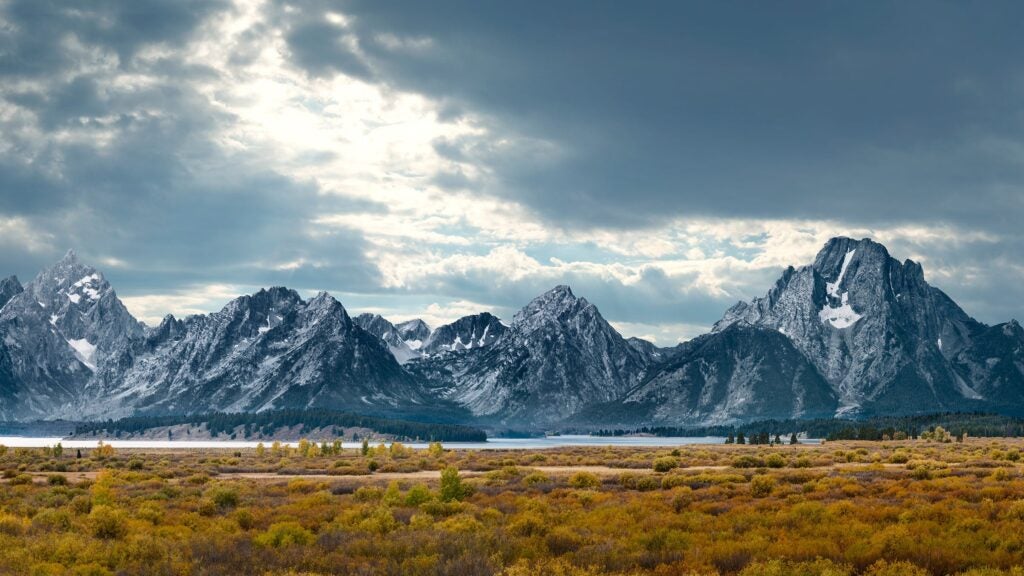No products in the cart.
Outdoor Adventure
How to Get the Popular Hiking Permits in 2023
In high school, my friends and I decided to go on a spur-of-the-moment trip to Yosemite and hike up the famous cables to Half Dome. We packed up the car and got ready to start the 7-hour drive from our hometown to the park’s opening gates when I heard one of my friends whisper from the backseat: “Wait, do we need a permit or something?” The park had just recently started requiring permits for the cables, and we were too caught up in the excitement of bagging a coveted peak to remember the one thing we needed to summit.
Now, I have a tradition with Recreation.gov, the entity responsible for dispensing permits, camping reservations, and entry fees to federal land. Every couple months, I apply for permits to visit my favorite trails and backcountry sites and hopefully gain access to some new ones, too.
If you have trail aspirations of grandeur this year, you’re likely going to need a permit or two. And for many of these permits, you need to plan months in advance. For an epic spring, summer, and fall, look into securing a permit now.
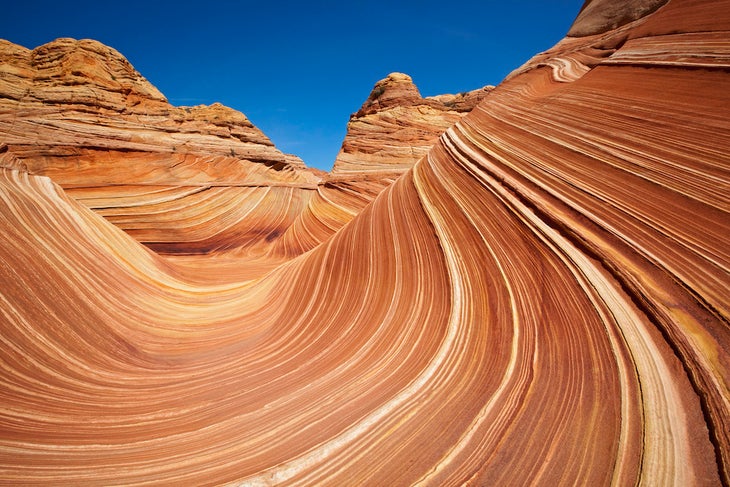
“The Wave,” Arizona and Utah
This permit grants you day-use access to the Instagrammable geologic sandstone formation in Coyote Buttes North on the Utah-Arizona border.
How to Apply:
Four months before the start of your dream trip, visit recreation.gov and apply for a $9 permit. If you need a permit for May, for example, apply in January. A maximum of 64 people are granted permits each day. If you’ve won the lottery and will receive a permit, you’ll get notice the first day of the month after you applied. So, if you applied in January, you’ll receive an acceptance notice February 1 for your permit in the month of May.
You may only submit one application per lottery. You can apply for multiple months in a year, but not multiple permits in a month.
I Didn’t Get a Permit. Now What?
There are lots of scenic trails in the area that you can just show up and hike. Check out Mars-like rock formations in Vermillion Cliffs National Monument, no paperwork or permit required.
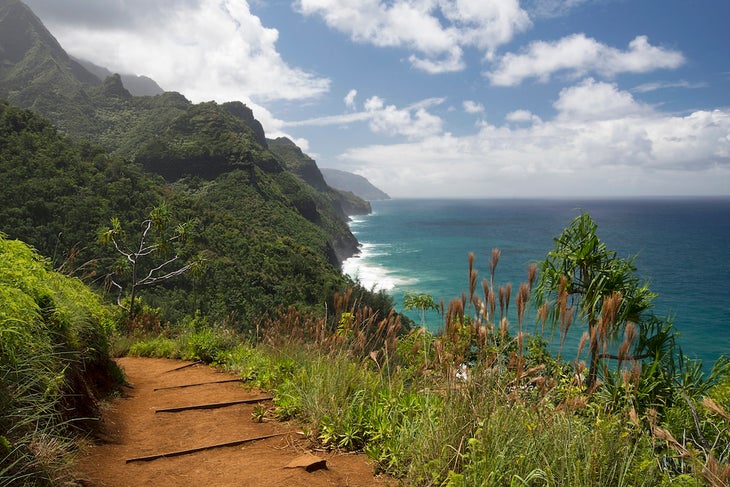
Kalalau Trail, Hawaii
The trail runs approximately 11 miles alongKauai’s north shore from Keʻe Beach to the Kalalau Valley. It’s been named one of the most beautiful—yet most dangerous— hikes in the country. The trail is steep and narrow, with adrenaline-spiking dropoffs and natural hazards, such as falling rocks and strong water currents. But, being able to see Hawaii’s blue oceans, dense forests, tall mountain peaks, and rushing waterfalls—all within one hike—make it all worth it. Throughout these 11 miles, you’ll traverse five valleys before ending at Kalalau Beach.
How To Apply:
Permits are available 90 days out from your trip date and sell out quickly, especially during peak times of the year. The permit’s governing entity only allows 60 hikers on the trail at one time, so you might have to throw a few elbows when reserving your spot.
As early as 90 before you want to hit the trails, reserve your permit on the Hawaii Department of Land and Natural Resource online reservation system. Select your date and reserve your spots. Important note: The permit also serves as your entry reservation into Hā’ena State Park.
I Didn’t Get a Permit. Now What?
You don’t need one for the first two miles of the trail. Without a permit, you can still go on a lovely out-and-back 4-mile hike that will show you some of the best views of Kauai. For hikers wanting to stay within the 2-mile boundary, find more information here.
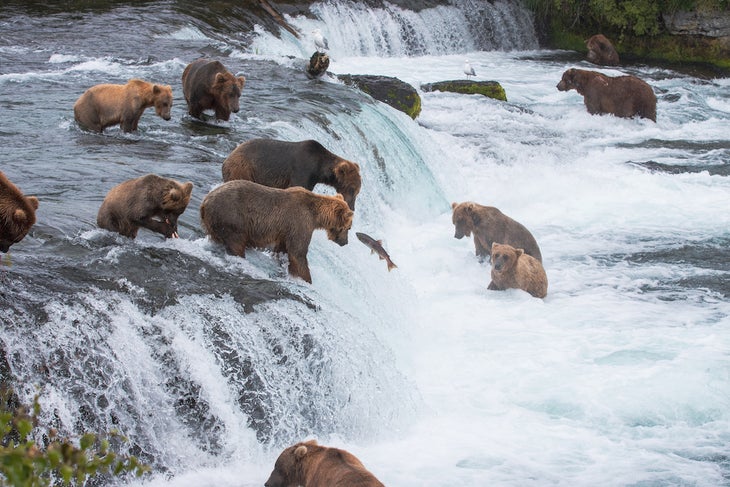
Brooks Camp, Alaska
If you’re familiar with Backpacker, you probably know how much we love Fat Bear Week. We go nuts for those chonky bois. Those famous bruins live in Katmai National Park, specifically along the Brooks River. People from all around the world travel to the park just to see these brown bears. It doesn’t hurt that Katmai is also an active volcanic landscape with over 9,000 years of human history. In order to truly enjoy the park and be within close proximity to all its splendor, get a permit for the Brooks Camp campground. It’s one of the top-rated campgrounds in North America for a reason.
The 2023 season runs from June 1 to September 17. In the shoulder seasons (May 1-31 and September 18-October 31), there are minimal camp and campground services available.
How to Apply
The permit lottery for the 2023 season opens January 5. The campground holds 60 people per day, and the maximum group size per permit is six people. Visit recreation.gov for more information.
I Didn’t Get a Permit. Now What?
You can still camp in the national park. You don’t need a permit to backcountry camp—just be sure you’re outside of the Brooks Camp Developed Area, which is the surrounding 1.5 miles of Brooks Falls. You are not allowed to backcountry camp within this developed area year-round or within the Hallo Bay meadows between April 1 and October 31.
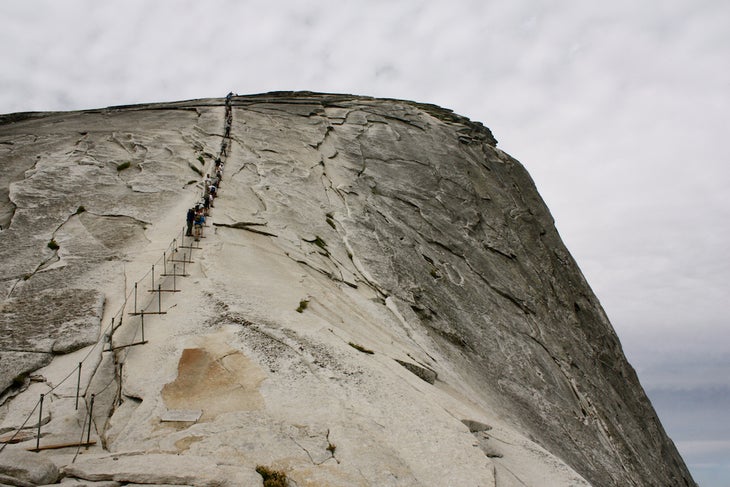
Half Dome Cables, Yosemite
If you’ve seen a picture of Yosemite, you’ve likely seen a picture of Half Dome. Each year, thousands of people reach this famous summit, which was at one point considered impossible to scale because of the sheer slope of the granite. The park puts up the cables each spring and takes them down each fall
How To Apply:
You don’t need the permit to be on the trail itself. You only need a permit for the final cable ascent. The preseason lottery application occurs throughout March of this year, and you’ll find out if you won a spot on the cables on April 11. If you want to hike on the date you’ve selected, you have until May 8 to accept the preseason lottery. Apply here.
I Didn’t Get a Permit. Now What?
Only 225 hikers are allowed beyond the base of the subdome every day. So, permits are hard to acquire. There are daily lotteries available between May 24 and October 8 of this year (dates might adjust based on conditions on the bookending dates). Apply here for a permit two days before your desired hike.
If you aren’t able to get any permit whatsoever, the 14 to 16 mile round-trip hike to the base of the cables is still worth it. Even without a permit, you’ll be able to pass Vernal and Nevada falls and soak in panoramic views of Yosemite Valley from above.
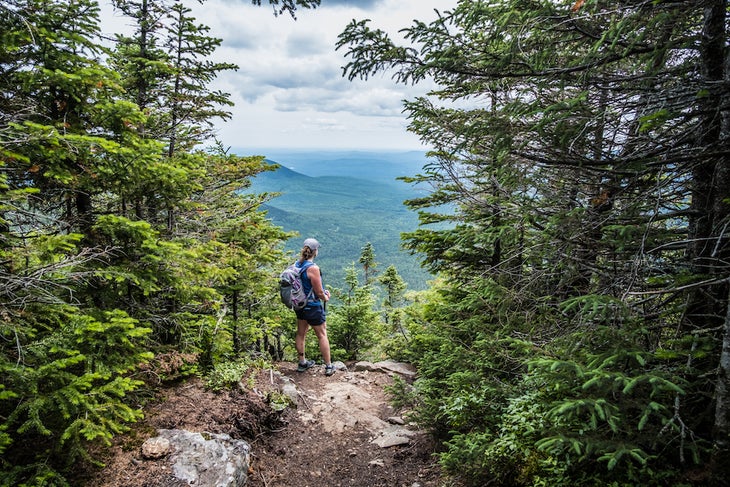
Appalachian Trail
You don’t need a long-distance hiking permit to complete the east coast’s famous long trail. But, the trail passes through several state and national parks, forests, and protected lands that require fees or permits for overnight camping.
How to Apply:
For the Great Smoky Mountains, you need a permit to enter the park, which northbounders can get at the Fontana Dam visitor center or the “Fontana Hilton” shelter, and southbounders can get it at the Bluff Mountain Outfitters in Hot Springs or the Big Creek Ranger Station. Anyone caught without a permit will be charged a $125 fee. AT thru-hikers can apply for a $20 backcountry permit here.
For Shenandoah National Park, thru-hikers and overnight backcountry travelers can get a required no-charge permit at visitor center stations and self-registration kiosks. For more information on which areas require a permit along the AT, click here.
I Didn’t Get a Permit. Now What?
You shouldn’t have any issues getting permits in the areas requiring them. There generally aren’t any quotas for thru-hikers (but there are for the general public).
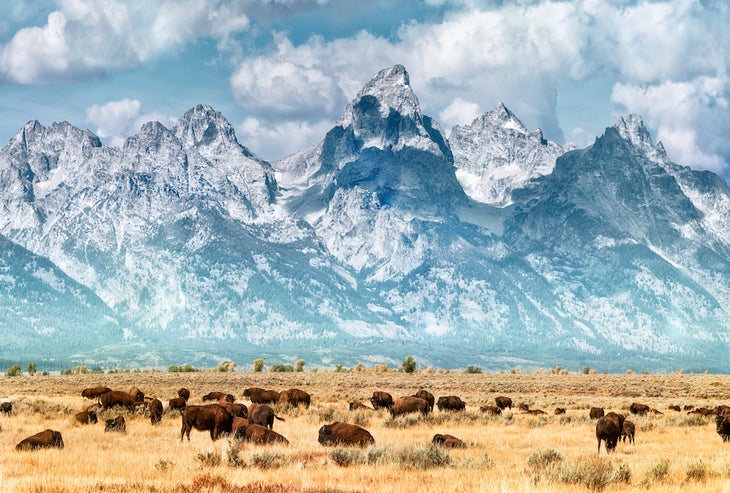
Grand Teton National Park, Wyoming
The Teton Crest Trail, a 40-mile-long path that takes you through ridgelines and around high alpine scenery, is one of the highlights of the range. This scenic route has been a mainstay on many backpackers’ bucket lists for years. To limit the amount of human impact on the trails, the park requires a permit to camp in the backcountry. This permit gives you access to sleep along the hundreds of miles of trails throughout this park, not just the Teton Crest Trail.
How To Apply
Advance backcountry permit reservations open 8 a.m. MT on January 10 for overnight stays between May 1 and October 31 of this year. You can make a reservation online here between January 10 and May 15. Between May 16 and December 31, backcountry permits are available in person on a first-come, first-served basis.
I Didn’t Get a Permit. Now What?
You don’t need a permit to be in the park in general. There are still plenty of dayhikes you can do without a permit. Here is one of our favorites.
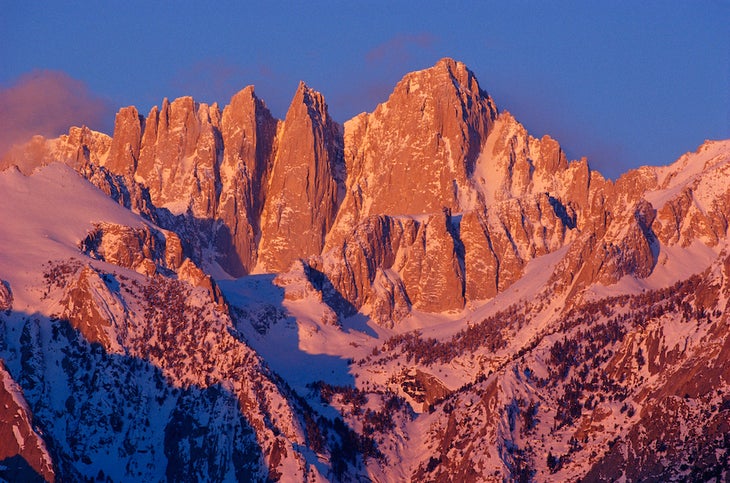
Mount Whitney, California
It’s not surprising that the trail to the highest point in the Lower 48 is a popular one. Last year, 26,750 hopeful hikers submitted applications to summit Whitney. That adds up to a lot more than the 100 dayhikers and 60 backpackers allowed on the trail every day from May to October.
How to Apply
It doesn’t matter if you’re dayhiking or backpacking this trail—all hikers between May 1 and November 1 have to apply in the lottery for a permit within that time frame. Applications for the lottery are open between February 1 and March 1, and results are posted March 15. From then, you have until April 21 to confirm your winning lottery and to pay the $15/person reservation fee. Apply for a lottery here. When applying, you rank your top 10 favored trip dates, which gives you the best chance at snagging a spot on this bucket-list hike. Consider your fitness and expertise level when selecting dates: If you don’t have much experience hiking in snow or ice, don’t try this trail before late June or after mid-October.
I Didn’t Get a Permit. Now What?
If you didn’t win the lottery the first go-around, dates from unclaimed lotteries are put online for web reservation at 7 a.m. PT April 22. Unfortunately, there are no walk-up permits for this trail. If you want to try some high-altitude hikes in 2023, there are lots of 14ers within driving distance of Whitney that don’t require a permit. Try White Mountain Peak, and if you’re dayhiking, you don’t need a permit for Split Mountain, Mt. Langley, Mt. Sill, Middle and North Palisade, or Mt. Williamson.
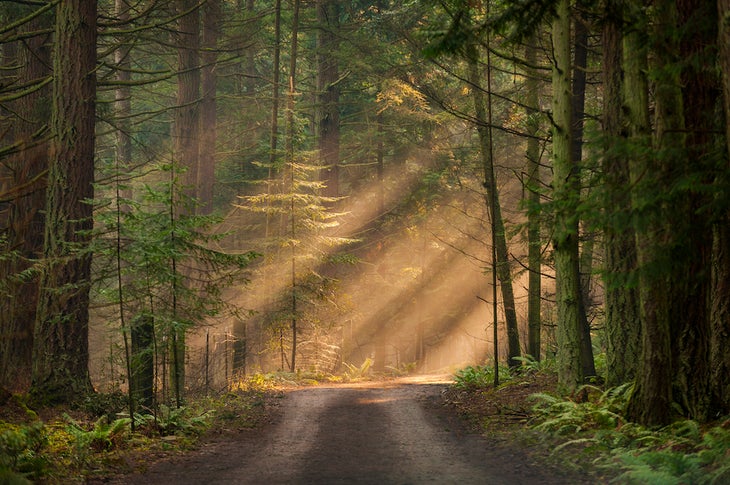
Enchantments, Washington
You need a permit for both day and overnight use in the Enchantment area because of the area’s fragile environment. In the past decade, the number of applications each year skyrocketed from 2,330 in 2012 (when applicants had unlimited entries) to 36,827 in 2022 (when applicants could only enter once).
How To Apply
The lottery for this permit area opens at 7 a.m. PT February 15 and closes at 11:59 p.m. March 1. Follow the instructions here for a permit. The random lottery drawing takes place on March 8, but you’ll be able to view the results on or after March 17.
I Didn’t Get a Permit. Now What?
You’d typically be able to apply for the walk-up lottery at the Leavenworth Ranger Station; it has been suspended for the 2023 season until further notice. Now you can apply for a “walk-up spot” in the recreation.gov reservation system each Sunday. These permits are also competitive, so plan accordingly.
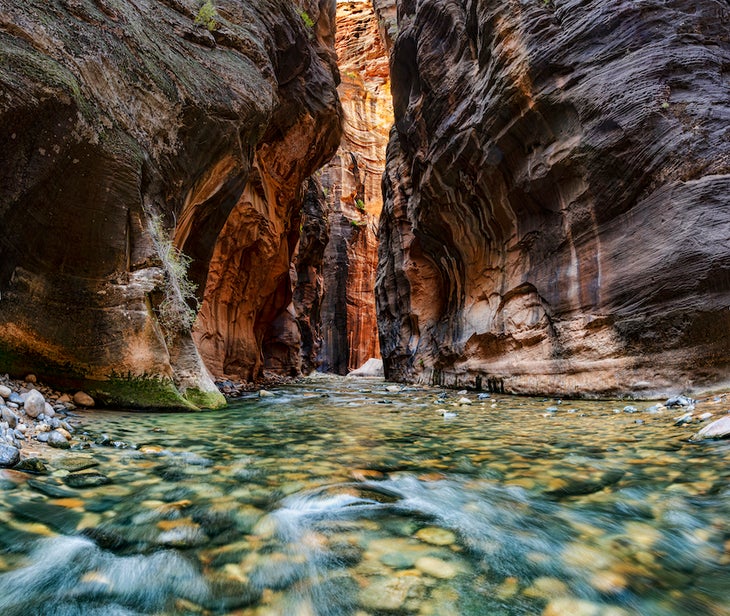
Virgin River Narrows, Zion National Park
This is one of the most popular hikes in Zion. At times, the canyon hike is only 20 to 30 feet wide and 2,000 feet deep. Dip your toes (literally) in the Virgin River hike that draws people from all around the world.
How To Apply
If you’re wanting to hike the entire 16-mile trail in one go, you only need one wilderness permit for your group. Click on this link, book your reservation, and pay the initial $5 fee. If you’re wanting to break up the hike into two days, you need one wilderness permit for your campsite. Click on this link, book your campsite reservation, and pay the initial $5 fee. Both types of permits will let you start at Chamberlain’s Ranch Trailhead and exit at the Temple of Sinawava.
Most of the time, there are two months available at a time for permit-snagging. At 10 a.m. MT on the fifth of every month, the current and following month becomes available. So, on January 5, permits for both January and February are available. Most people get a permit to hike the Narrows in the summer and early fall because that is when the water is warm and the water level is low. Flash floods are possible and life-threatening at this time of the year.
I Didn’t Get a Permit. Now What?
Don’t lose hope—there are still short-notice permits you can get. When the calendar permits are fully booked, the park offers a last-minute drawing for day trips. These drawings take place at 1 p.m. MT two days before your trip date. Apply here any time between 7 and 2 days of the start date. Any spots not taken in these last-minute drawings will be available as walk-in permits. During normal hours of operation, visit the Zion Canyon Visitor Center Wilderness Desk or the Kolob Canyons Visitor Center to see if there are any walk-in permits available. This is a good backup, but never a guarantee, so be sure to have some permit-free hikes planned just in case.
Source link

